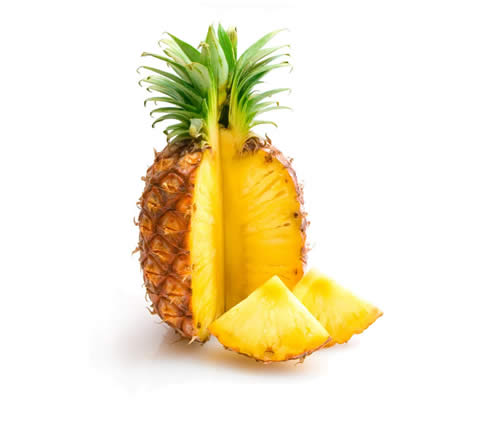Quercetin (3,4,5,7-pentahydroxylflavone) belongs to a class of water-soluble plant coloring substances called bioflavonoids. It is found in many often-consumed foods, including especially red onions, apple, tea, berries, and brassica vegetables, as well as many seeds, flowers, barks, and leaves. It is also found in medicinal botanicals, including Hypericum perforatum, Ginkgo biloba, Sambucus canadensis, and many others, and is usually a component of the therapeutic activity of the plant.
Quercetin Antiviral Activity
Studies indicate that quercetin may improve immune function and inhibit viral replication. Quercetin’s antiviral effect may be related to its ability to bind viral protein coat and to interfere with viral nucleic acid synthesis. Italian investigators demonstrated that they could use a quercetin-rich extract to up-regulate the antiviral immune response in cells infected with herpes viruses. Quercetin may exert antiviral effect against different types of viruses including herpes simplex virus type, polio virus type 1, reverse transcriptase of HIV and other retroviruses. Quercetin exerts antiviral activity against reverse transcriptase of HIV and other retroviruses, and was shown to lessen the infectivity and cellular replication of herpes simplex virus type 1, polio-virus type, parainfluenza virus type 3, and RSV (respiratory syncytial virus). In an study, quercetin inhibited hepatitis C virus replication. Another study demonstrated that quercetin and quercetrin both have an inhibitory activity on the HIV reverse transcriptase and on casein kinase 2, an enzyme responsible for the transcription of several hiv genes. Quercetin has a triple action to fight viruses; 1- Reduces the ability of a virus to infect cells. 2- Inhibiting the ability of infected cells to replicate and reproduce. 3-Reducing resistance of infected cells to medication treatment.
Influenza viruses are major pathogens that cause respiratory infections in humans and animals. Findings from cell culture experiments provide potent evidence that quercetin may be efficacious as an anti-infective agent, reducing the infectivity and replication of a variety of respiratory viruses.A new research demonstrated that quercetin and isoquercetin (a glucoside form of quercetin), substantially reduced the replication of influenza viruses in vitro and in vivo. In one study, quercetin inhibited influenza A virus replication in the lab more effectively than the anti-flu medication Tamiflu.
Quercetin, has been reported to inhibit infectivity and replication of a broad spectrum of viruses and may offset the increase in susceptibility to infection associated with stressful exercise. A study demonstrated that quercetin could decrease flu when animals were intentionally exposed. In this study mice were exposed to the flu virus under various conditions, including increased stress from exercise. The mice given quercetin offset the unfavorable effects of stress and demonstrated much less susceptibility to the flu. This study builds on an earlier human study where quercetin reduced ailment and maintained mental performance in physically stressed people. Trained cyclists consumed 1000 mg per day of quercetin (also vitamin C and niacin) for 5 weeks. After 3 weeks, subjects rode a bicycle three hours per day for 3 days to the point of exhaustion. After the exercise period, 45% of the placebo-consuming cyclists became ill, while just 5% of the quercetin group suffered any illness.
In another animal study found that quercetin inhibits both influenza A and B viruses, and viruses were not able to develop resistance to quercetin cure. When quercetin was used with anti-viral medications the anti-viral activity was even stronger, and the quercetin prevented the development of resistance to the medications that otherwise occurs. In studies with flu-infected mice, quercetin’s antioxidant effects were shown to play a role. Quercetin doses of 1-mg/day substantially decreased production of harmful superoxide free radicals by a type of white blood cell in the lung.
Rhinovirus, which is responsible for the majority of common colds, moreover causes exacerbations in people with asthma and chronic obstructive pulmonary disease. According to a research presented at the American Thoracic Society 2010 International Conference held, quercetin could be a cure for rhinovirus (RV)-caused infections. Hepatitis C is an important cause of liver failure and liver cancers. In Aug 2009 cell study demonstrated that quercetin interfered with the gene signals that enable hepatitis C virus production. The researchers showed that the Quercetin inhibits hepatitis C viral production in tissue culture, at least partially through its inhibition of heat shock protein expression. Therapy with quercetin reduced the infectious particle production to nontoxic concentrations of HCV.
 Clinical studies have evaluated the effectiveness of bromelain most frequently using preparations containing differing complexes of proteolytic enzymes and differing concentrations of bromelain. 1-
Clinical studies have evaluated the effectiveness of bromelain most frequently using preparations containing differing complexes of proteolytic enzymes and differing concentrations of bromelain. 1-